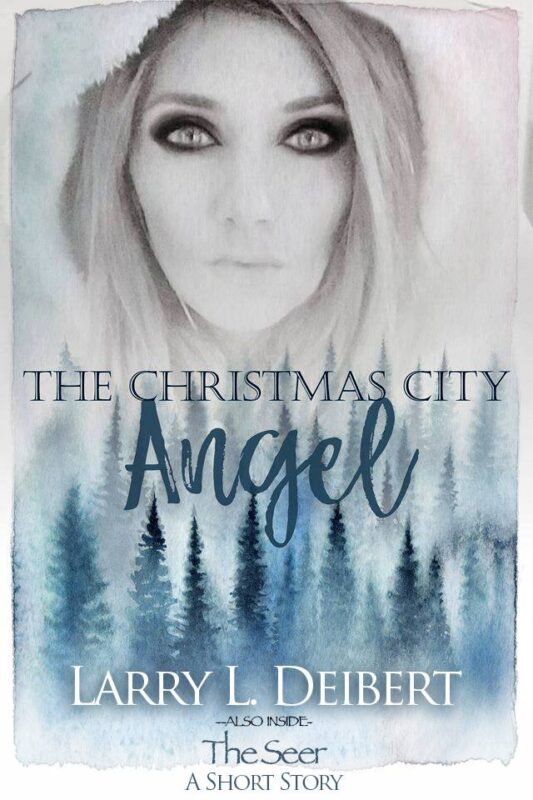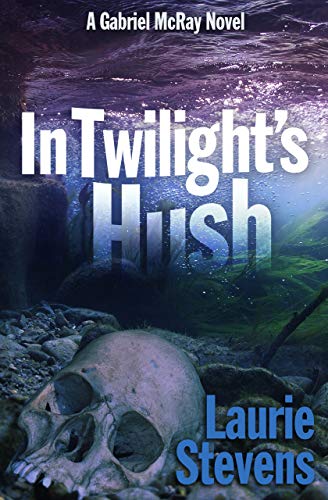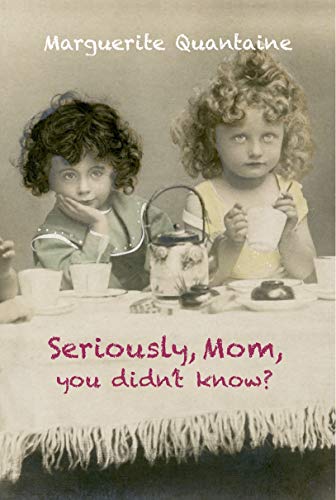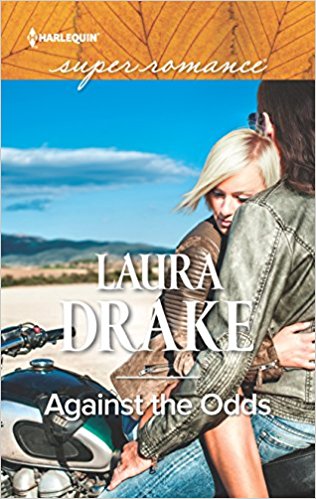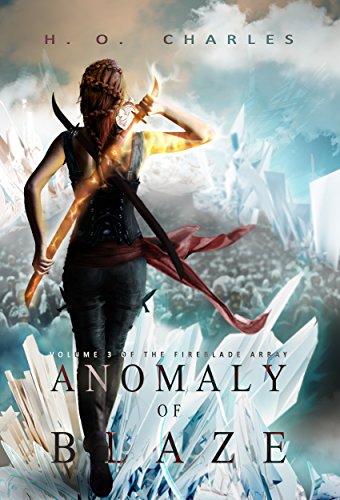Isabel Swift asks: Are you a member of the Academy? Do you know someone who is?
May 24, 2010 by A Slice of Orange in category Archives tagged as Academy Awards, Animals, OscarsThere needs to be an Oscar for Best Performance by an Animal. Really. OK. Maybe not every year. Every other year? Every five years? I feel certain that at least once every five years there will be enough Oscar worthy performances by animals for a compelling race.
What has inspired me, you wonder?
Is this a frivolous thought? No. Years — no DECADES ago, I recognized that the dog in Road Warrior (scroll down for photo of same if you click) delivered an Oscar-worthy performance.
Yes, I know. It’s not without its challenges. What about situations like Seabiscuit, with countless horses playing the part. Inappropriate, I would agree.
And what about the animal handler(s)? Eh?
Though I certainly would allow “crossdressing” if you could call it that for creatures who don’t normally wear clothes. For example I believe Lassie was played (for the most part) by a laddie. But since we’re not giving Best Animal Actor and Actress here, I don’t think we need to open the kimono, so to speak.
My inspiration now is Jenny, the orangutan in Creation, the film about Darwin. Truly an oscar-worthy performance.
Of course, it’s not going to happen. There will never be an Oscar for Best Animal Performance.
Not because animals can’t be satisfactory celebrities—sure, they could give endorsements; they’re cute enough, and likely a lot cheaper. Though it’s going to be hard to find a breed that can (or would even want to) play golf.
And no—with animals there wouldn’t ever be a problem with tarnishing their image. Hey, monkeys are SUPPOSED to have wild monkey sex! They’re monkeys! A stallion having sex with countless mares? All part of the DNA.
No, the sad reason it won’t happen is because it will make the human actors look bad. If an animal can deliver an Oscar worthy performance, what does it say about us, the humans? And since it’s the humans that are putting on the show, some great natural performers and performances will go unrecognized.
Do you have a favorite to share?
0 0 Read moreImpotence by Monica Stoner, Member at (very) large
May 19, 2010 by Marianne H. Donley in category ArchivesImpotence – a word to strike fear in the hearts and minds of men. For women, an opportunity to be understanding and supportive. Maybe. What about for a writer?
Could the dreaded writer’s block, though proclaimed by some writers to be non existent, at best a crutch for non-productive writers, be our own form of impotence? The thought came to me as I was putting fingers to keys on a new project. My basic method has always been to start with a scene and keep writing until I get stuck, making up names along the way. Generally I know where the story is set and why these people are in the story. Sometimes I write more than I might need for that specific story but it all comes together in the end.
Then I was told about plotting, and how important it is for efficient story telling. Always eager to learn new ideas, I thought ‘Why not?’ and proceeded to lay out the story prior to writing. Then found out once I’d done that, I wasn’t as driven to write the story – hadn’t I already done so? Okay, so maybe I was using the wrong method. Enter years (no kidding) of books and seminars and on line studies. No writing, mind you, but tons of theory.
Then someone introduced me to data bases for writers. Where you can treat the computer like a succession of yellow pads, plus sticky notes. Now how cool was that??? I downloaded the one that looked best to me, started in on the book that had been beating at my skull from the inside. Here we go, I thought. On the way to . . . nowhere. Mental impotence. The dreaded, perhaps non existent, writer’s block.
Drat.
It looks like the answer, for me at least, is to go back to those Halcyon days when I knew nothing about planning a book, about plotting, about scene beats, story arcs, defining moments, and just write. Then after the story is out of my mind, and there’s room up there for more technical stuff, I can apply those principles necessary to a publishable book. Coming in from the back door, I suppose, but there is always more than one door into the keep.
Once I can convince my creative self I won’t be imposing any more limits and rules, I’m thinking the ideas will start up again. Or hope, since I don’t think the drug companies are going to make any great strides toward developing some sort of mental Viagra.
Monica Stoner
tsent@ix.netcom.com
We’re only given a little spark of madness; we mustn’t lose it
0 0 Read moree-maginings: Will Kobo Kill the Kindle?
May 16, 2010 by A Slice of Orange in category Archives tagged as Amazon Kindle, e-maginings, e-readers, Kobo, Linda McLaughlin, Lyndi Lamont, nook, SonyThe Kobo eReader is now available in Canada and coming to a Borders near you next. At $149.99 US, it’s $110 less than the Amazon Kindle and BN’s nook and $50 less than the Pocket Edition of the Sony Reader. The lower price should appeal to readers looking for an affordable device. Kobo also has a Bluetooth connection, so users with certain smartphones can update their selections on the go. There are also mobile apps for the iPhone and iPod Touch as well as Palm Pre, Blackberry and Android.
Kobo uses the same e-ink display as the other readers and appears to be about the same size. It has 1 GB of memory, and unlike the Kindle 2, it has a slot for an SD reader card, expanding storage capabilities even further. It comes with 100 free e-books (all classics) so is ideal for a high school or college student. In fact, I think any e-reader makes a great graduation present, though the Kobo may arrive too late for this year. It’s due in Borders stores around Father’s Day.
Kobo provides an e-reader comparison page on their website. The file formats it supports are ePub, unsecured PDF and Adobe DRM.
I’ve been reading e-books for over ten years now, so it’s exciting to me to see so many different readers now available. Prices of e-ink readers have come down substantially since Dec. 2007 when I bought my first Kindle. This is getting really interesting.
What do you think? Will Kobo kill the Kindle? Or will it perhaps force Amazon and BN to lower their prices again? I suspect the latter, at least for the short term.
Linda McLaughlin
http://www.lindamclaughlin.com/
Click here to enter my annual Erotica Stay-at-Home Conference Bag giveaway:
http://www.lyndilamont.com/home.html
Links to e-book readers mentioned in this post:
0 0 Read moreA Naughty Victorian Lady travels to Italy as “Bionda Samurai†by Jina Bacarr
May 11, 2010 by A Slice of Orange in category Archives tagged as blonde samurai, book trailer, Confessions of a Podcast Goddess, England, Japan, Japanese, kimono, lady, naughty, VictorianMorning sunlight, wiggling through the petit-point pattern on the lacy curtain, hovers over my shoulder to see what I’m writing. A red-breasted robin fluttering about on the window sill holds its breath, pen scratchings fill my ears.
I am beside myself with excitement, spilling blue ink on my gown and smudging the fine rice paper upon which I write with dirty fingerprints, but I know you shall forgive me for word has reached me that my memoir, The Blonde Samurai, has found its way to faraway shores.
To Italy.
A place where–
The romance of carnival and exquisite masks enchants the eye.
The sacred mount of the holy saints restores one’s faith.
The musical language of the arts and literature delights the ear and enriches the soul.
I must recount to you how pleased I am that the story of this Irish-American lass and her samurai has made its way to such a grand place.
Here then is the visual and audio presentation in Italian of the publisher’s synopsis of “Bionda Samurai†(available May 13th). Grazie!
=====
Postscript: I have also included the English translation for you:
“She is determined to recount her adventures in every detail, from the electrifying moments to the salacious, her life ruled by her insatiable appetite for all things sensual. Her story takes us from London to Japan, where the journey takes you through a maze of raw and vivid eroticism.
“Tantalizing and provocative scenes of sensuality await you in Japan. This is the return of class because Jina Bacarr (author of “The Blonde Geisha†and “Cleopatra’s Perfume“) puts forward with her usual skill a story that is unique and has earned her millions of readers around the world, her themes more endearing and bold with provocative situations raw and sexy but always romantic.”
Anti-Procrastination Month by Kitty Bucholtz
May 9, 2010 by A Slice of Orange in category Archives tagged as It's Worth It, Kitty BucholtzAt Routines for Writers, we have declared May to be Anti-Procrastination Month! We all have a pile (mental or physical) of work we’ve been meaning to do, projects we’ve been trying to finish, etc. But when will it ever get done?
This month!
To give you some ideas on what kinds of things you might want to catch up on during May’s Anti-Procrastination Month, I thought I’d share with you my list (in no particular order).
Work on the category romance that I want to finish and send out by August 1. Yeah, the one I’ve barely even looked at since grad school started in March.
Choose which magazine to send the article to that was rejected last week by Writer’s Digest, then get it out in the mail.
Submit a piece to the Christmas anthology that I’ve been meaning to submit to for weeks. (Oh, and actually write the piece!)
Catch up on all the readings that have been assigned this semester for all of my classes.
Read the Margie Lawson “Defeating Self-Defeating Behaviors†lecture packet that I started and didn’t finish in January.
Read the other great Margie Lawson lectures I’ve bought and not finished reading yet!
Take the time (what time?!) to work on promotional items for Routines for Writers.
Continue to research for the superheroes book, and the new angels/demons story that I’m writing for class.
Read some more YA books as research for the story I’m writing for class.
That’s the short list – for now! LOL! And it doesn’t include all the “regular†or “household†items that need to be done – like choose and buy an anniversary present for my husband for our 20th anniversary this week! Eek! LOL!
The big question when I make a list is – how in the world am I going to get this all done? Well, I was praying for wisdom this week and what do you know – God really does use email! I subscribe to a daily email from Motivation in a Minute and a recent email had this quote from Amy Jones:
To do twice as much in half the time, you can’t approach your goals haphazardly. A well-thought plan will keep you clearly on track towards your goal; and the methods of planning are as varied as our personalities.
I have a tendency to think that there is plenty of time to get everything done. But experience has taught me that optimism alone is not my friend. I need a plan. One that is too structured will make me crazy and I’ll quit sooner than later. A plan that is nothing more than a To Do list won’t help me stay organized and disciplined enough to get the most important items done first. (And since I’m now convinced I will die with a long To Do list with many items not crossed off, getting the most important ones done is crucial to my emotional well-being!)
Last year at Routines for Writers, I talked about my new routine – My First Five. It’s been working! There are only so many things I can remember to do at once. And when I’m feeling overwhelmed, I need to know what the next thing is that I should do. Just one. So the First Five helps me prioritize. What I need to do now is create a Next Five, and a Next Five after that. I got my First Five done yesterday morning without any problem, then I watched a taped TV program later while I ate lunch and somehow the day just fell apart after that. Today, I did my First Five then looked at my list and put a bullet next to all the things that had to be done today. That didn’t work as well as I’d hoped either. Because I also did several things that didn’t have to be done today. So starting tomorrow, I’m going to organize my To Do List into groups of five items. I’ll let you know if I get more work done.
One last thing – I recently heard about a software program called Freedom. It’s sort of a time-lock for your Internet connection. You can set it for any amount of time up to eight hours and during that time you won’t be able to access the Internet or send and receive email. It’s $10 and is available for both Windows and Mac. I think it’s hysterical that I’m actually going to spend money on a program that will force me to focus! (Why can’t I do that by myself??) I’ll let you know how it’s working.
If you do better with a little accountability, stop by Routines for Writers and tell us what you want to get done this month! We’ll encourage you to keep going and find a routine that works for you. Happy Writing!
Affiliate Links
A Slice of Orange is an affiliate with some of the booksellers listed on this website, including Barnes & Nobel, Books A Million, iBooks, Kobo, and Smashwords. This means A Slice of Orange may earn a small advertising fee from sales made through the links used on this website. There are reminders of these affiliate links on the pages for individual books.
Search A Slice of Orange
Find a Column
Archives
Featured Books
IN TWILIGHT’S HUSH (A GABRIEL MCRAY NOVEL BOOK 4)
Detective Gabriel McRay investigates a cold case from 1988 involving a missing teenager named Nancy Lewicki.
More info →SERIOUSLY, MOM, YOU DIDN’T KNOW?
Life is a silver lining for those of us willing to scrape the surface of adversity.
More info →ANOMALY OF BLAZE
A new monster has taken up residence in her mind...
More info →Newsletter
Contributing Authors
Search A Slice of Orange
Find a Column
Archives
Authors in the Bookstore
- A. E. Decker
- A. J. Scudiere
- A.J. Sidransky
- Abby Collette
- Alanna Lucus
- Albert Marrin
- Alice Duncan
- Alina K. Field
- Alison Green Myers
- Andi Lawrencovna
- Andrew C Raiford
- Angela Pryce
- Aviva Vaughn
- Barbara Ankrum
- Bethlehem Writers Group, LLC
- Carol L. Wright
- Celeste Barclay
- Christina Alexandra
- Christopher D. Ochs
- Claire Davon
- Claire Naden
- Courtnee Turner Hoyle
- Courtney Annicchiarico
- D. Lieber
- Daniel V. Meier Jr.
- Debra Dixon
- Debra H. Goldstein
- Debra Holland
- Dee Ann Palmer
- Denise M. Colby
- Diane Benefiel
- Diane Sismour
- Dianna Sinovic
- DT Krippene
- E.B. Dawson
- Emilie Dallaire
- Emily Brightwell
- Emily PW Murphy
- Fae Rowen
- Faith L. Justice
- Frances Amati
- Geralyn Corcillo
- Glynnis Campbell
- Greg Jolley
- H. O. Charles
- Jaclyn Roché
- Jacqueline Diamond
- Janet Lynn and Will Zeilinger
- Jaya Mehta
- Jeannine Atkins
- Jeff Baird
- Jenna Barwin
- Jenne Kern
- Jennifer D. Bokal
- Jennifer Lyon
- Jerome W. McFadden
- Jill Piscitello
- Jina Bacarr
- Jo A. Hiestand
- Jodi Bogert
- Jolina Petersheim
- Jonathan Maberry
- Joy Allyson
- Judy Duarte
- Justin Murphy
- Justine Davis
- Kat Martin
- Kidd Wadsworth
- Kitty Bucholtz
- Kristy Tate
- Larry Deibert
- Larry Hamilton
- Laura Drake
- Laurie Stevens
- Leslie Knowles
- Li-Ying Lundquist
- Linda Carroll-Bradd
- Linda Lappin
- Linda McLaughlin
- Linda O. Johnston
- Lisa Preston
- Lolo Paige
- Loran Holt
- Lynette M. Burrows
- Lyssa Kay Adams
- Madeline Ash
- Margarita Engle
- Marguerite Quantaine
- Marianne H. Donley
- Mary Castillo
- Maureen Klovers
- Megan Haskell
- Melanie Waterbury
- Melisa Rivero
- Melissa Chambers
- Melodie Winawer
- Meriam Wilhelm
- Mikel J. Wilson
- Mindy Neff
- Monica McCabe
- Nancy Brashear
- Neetu Malik
- Nikki Prince
- Once Upon Anthologies
- Paula Gail Benson
- Penny Reid
- Peter Barbour
- Priscilla Oliveras
- R. H. Kohno
- Rachel Hailey
- Ralph Hieb
- Ramcy Diek
- Ransom Stephens
- Rebecca Forster
- Renae Wrich
- Roxy Matthews
- Ryder Hunte Clancy
- Sally Paradysz
- Sheila Colón-Bagley
- Simone de Muñoz
- Sophie Barnes
- Susan Kaye Quinn
- Susan Lynn Meyer
- Susan Squires
- T. D. Fox
- Tara C. Allred
- Tara Lain
- Tari Lynn Jewett
- Terri Osburn
- Tracy Reed
- Vera Jane Cook
- Vicki Crum
- Writing Something Romantic
Affiliate Links
A Slice of Orange is an affiliate with some of the booksellers listed on this website, including Barnes & Nobel, Books A Million, iBooks, Kobo, and Smashwords. This means A Slice of Orange may earn a small advertising fee from sales made through the links used on this website. There are reminders of these affiliate links on the pages for individual books.



